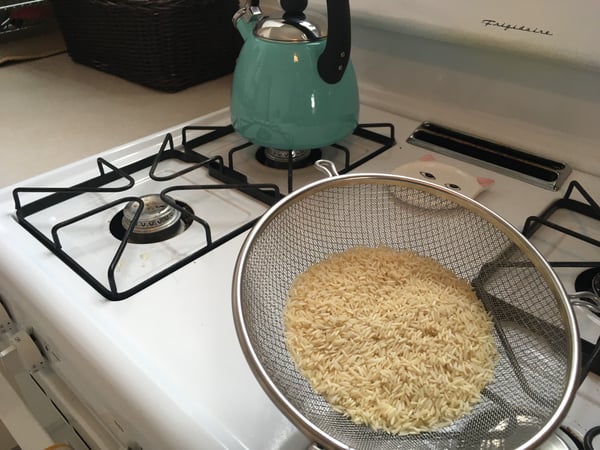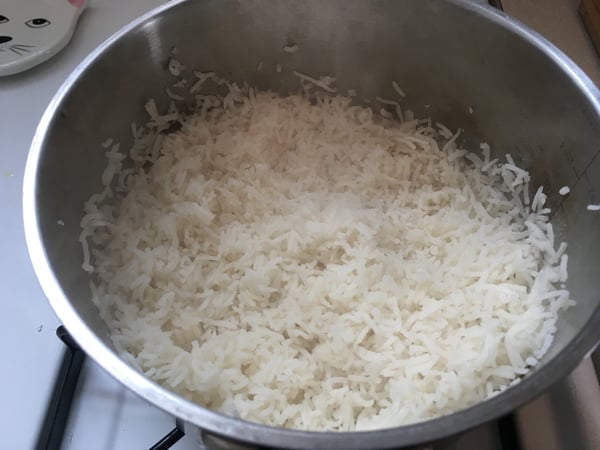Even though it's a staple the world over, making a really good pot of rice is harder than it looks. There's a reason those boil-in-a-bag things took off, you know. Let's assume you don't have a rice cooker: get one. Just kidding! But seriously a rice cooker is a lifesaver when you crave a steamy, perfectly fluffy bowl of rice regularly. Even if you don't have one, the age-old question of "to rinse or not to rinse" is relevant.

Definitely Required
Well, calling it a question is something of a misstep. You see, it's fairly common knowledge that rinsing rice does something. But many of us (yours truly included) have felt too lazy to implement this clearly underscored advice over time. And yes, time and time again, some of us have ended up with some really mediocre rice.
What we (I) needed was a controlled experiment. Something I could do easily and swiftly that would truly demonstrate results. I decided to use Basmati rice and decided to leave out all over flavorings to truly gauge the effectiveness of two time-honored techniques: rinsing and soaking.
Here's Why
The chief reason to rinse is to remove surface starch from rice grains, which can make them gummy as they cook. Soaking allows rice to absorb water, giving it a leg up on cooking. This helps it to have a better, more even texture, instead of drying out while the inside is not evenly steamed and fluffed.
The Experiment
After putting on my lab coat, I set out to test what I already knew: the rinsed, soaked rice would be lighter, fluffier and more "moreish" to eat. But sometimes you just need to see for yourself.
Method One: "Throw it in the Pot"
For batch number one, I simply placed 1 cup rice to 1.75 cups water in a bowl, brought it to a boil, then a simmer. I left it simmer for about 15-20 minutes with the lid sealed tightly.

For batch number two, I thoroughly rinsed 1 cup of rice in a strainer, taking care to agitate it by mixing it with my hands. I then placed it in plenty of cold water to soak for about 30 minutes.
I then cooked this rice using the same method as batch one, although I pulled it a little earlier since it had been soaking.
The results? The un-soaked batch was dry and lackluster. The grains were almost too separated. The batch I rinsed and soaked was truly fluffy, a little sticky (in a good way), and the grains looks lighter and more opaque. They also just tasted better, more like real restaurant rice. If you're ever in doubt of whether it's worth the effort to soak, I'd say don't hesitate to commit. Your rice will thank you!
To learn more about this amazing ingredient in its many iterations, The Chopping Block has endless classes that deal with the many properties of rice. There's Sushi Workshop, our pleathora of Italian menus dealing with perfect risottos, and of course our Indian and Vegetarian Indian classes that use basmati rice. Look for those classes coming up in May when our calendar is released tomorrow.
